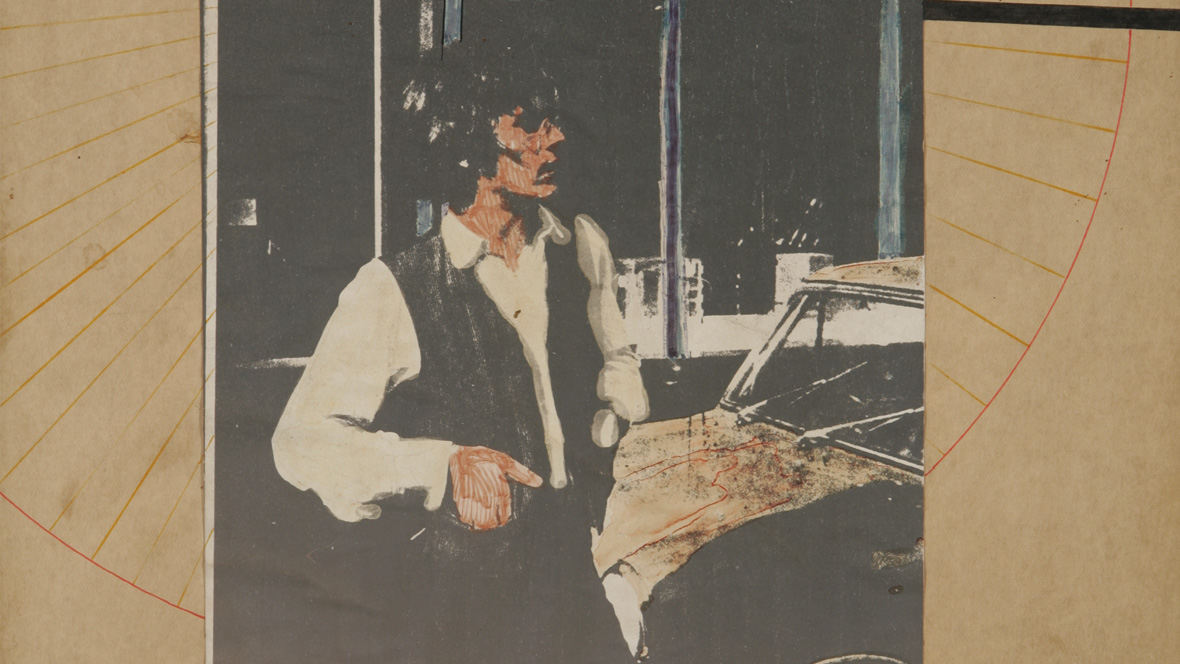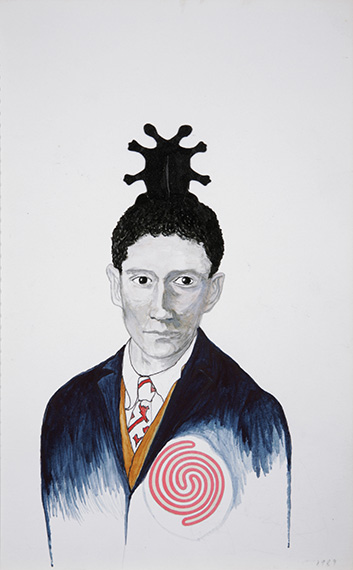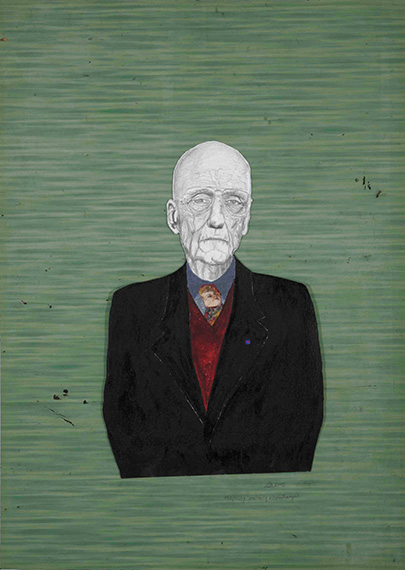
Hettie Judah in conversation with artist and Indica gallerist John Dunbar
As co-founder of London’s Indica in the ’60s, John Dunbar made counterculture culture. Fifty years on, the gallery’s artists such as Yoko Ono and Liliane Lijn remain fascinating.
In the closing weeks of 1965, London’s art scene got a jolt of new life with the arrival of Indica, an alternative bookshop and gallery spread over two floors of Mason’s Yard in St James’s. Opened by Barry Miles, Peter Asher and John Dunbar, the gallery took its name from Cannabis Indica and its clientele – artists and visitors alike – were appropriately switched on. While Miles ran the bookshop, Dunbar was responsible for programming the gallery. Over the two years it was open, Indica’s programme included exhibitions by Julio Le Parc, Liliane Lijn, Takis, Lourdes Castro, Jesús Rafael Soto and Carlos Cruz-Diez.
Then only recently graduated from Cambridge University, Dunbar and his partners in Indica became cultural superconnectors within a city thrilling to its own creative energy. Paul McCartney was one of the gallery’s first customers, and lent a hand setting up. Glamour came, too, courtesy of Dunbar’s young wife, the singer Marianne Faithfull, then in her first burst of pop stardom. Indica’s private views packed Mason’s Yard with an exciting crowd drawn from London’s counterculture.
An artist himself, Dunbar’s interest lay in creative developments happening well beyond London. He hung out with the Beat Generation poets, programmed a show of works by South American artists living in Paris, drank cocktails at Peggy Guggenheim’s Palazzo in Venice, and connected with artists from the Fluxus movement, among them Yoko Ono. It was at Ono’s exhibition at Indica in 1967 that the artist first met John Lennon, handing him a card that read ‘breathe’.
Indica’s legacy – in art and publishing – was honoured in a two-part exhibition at Riflemaker gallery in 2006 and 2007. Dunbar continues to make art, his work most recently exhibited at England & Co gallery in 2014.

John Dunbar Untitled (Marianne), 1982 © John Dunbar courtesy England & Co gallery Ink and collage on paper
Hettie Judah: I always think it’s the maddest idea in the world to start a gallery. Why on earth would you do such a thing?
John Dunbar: Well, I did it when I was 21 or something, when I didn’t know anything at all: about business or about art galleries. So I just winged it!
HJ: What was your idea of an art gallery at that point? Had you seen a space you were inspired by? Was somebody else doing something you thought was exciting?
JD: No, it was mostly that they were such stuffy, boring places in London at that time, with one or two exceptions. I’d got interested in art, because I had to finish off my degree by doing another year. They’d started up this fine art course at Cambridge, so I did art.
HJ: But a fine art course wouldn’t have covered Fluxus and Alan Kaprow’s ‘Happenings’ – I imagine it would have been all Flemish Masters and things like that?
JD: Yes – the Grand Tour around Rome and Antwerp!
HJ: So it was quite a leap from that to the kind of work you were showing at Indica?
JD: Yes! But, you know there was lots of stuff happening in London at that time. My friends were musicians and so on. We had the big mad poetry reading at the Royal Albert Hall in 1965.
HJ: Was that the event with people like Allan Ginsberg and Alexander Trocchi reading?
JD: Yes, them, and Harry Fainlight and stuff. Thousands of people had paid a quid to go. A friend of Gregory Corso introduced me to Barry Miles, who worked at Better Books in the bookstore. We thought that if people would pay a quid to see this rubbish we could do a shop for art and books. We thought it would be a doddle to get people in to see strange things. It was more just about opening up to weird stuff – not just paintings on a wall, and Dickens – avant-garde stuff.

John Dunbar Untitled August 5, 1975 Mixed media with collage on paper
HJ: It seems clear that you were looking outside of London toward the international scene at that point. Where were you getting your information? How did you find out about artists and other things going on?
JD: I spent a lot of time in Paris. All the American Beat poets were around, and they were friends. They’d come over here for the free junk you could get off the National Health Service. They were very interesting blokes. And one thing led to another: first you’d meet one person, then a friend of his, a friend of theirs, and so on. Or people just showed up, like Yoko did.
HJ: I guess conceptual art is well suited to chance encounters because you don’t need to see it, you just need to hear the story. Were you literally finding out about artists by word of mouth rather than seeing slides, or reproductions in a magazine?
JD: Most people weren’t in magazines in those days. So, yes, it was word of mouth person-to-person.
HJ: Did you think of yourself as representing the artists you showed, as a gallerist might today, or was it a different relationship?
JD: Sort of, but you know, having no money at all you couldn’t say ‘I’ll give you a contract,’ or anything like that. We didn’t sell much, because it was before people bought these sorts of things. So, it was all quite difficult really. We lasted a couple of years.
HJ: It’s one thing having that fantastic network of people making things. But how did you find the people to come in and be the audience, to be the buyers, theoretically, or the collectors? That’s a very difficult job, for anyone.
JD: We filled up Mason’s Yard with a thousand people, for most openings. We finally sold a few things. John [Lennon] bought, and Paul [McCartney] bought something.
HJ: I think nowadays there’s this idea that the art market is all crazy money. It sounds like that was less the feeling at that point, that it was more accessible?
JD: Yes. The 1990s changed everything with Damien [Hirst] and that lot really. They had all these wheeler-dealer dealers, you know? The business has got to be run by guys who can do business, and I couldn’t: I didn’t want to.
HJ: It’s funny you bring up Damien Hirst, because of course Mason’s Yard is now home to his gallery White Cube – or at least, to one of the many branches of the White Cube gallery around the world. When you look at that monolith in the middle of Mason’s Yard now, do you see it relating to what you were doing in the same space at all?
JD: I could have gone on and done all that if I’d wanted to, I suppose. It didn’t really interest me, but it might have, you know, if circumstances had been different.
HJ: It sounds like it was quite a small group of people at the heart of everything.
JD: It was, yes, London was very small in a way. There were hundreds of musicians. We were going to different recording sessions, there were exhibitions, happenings, performances, different clubs, all on the fly.
HJ: Did you see a boundary between visual art and music, literature, poetry, or was it all bundled up together?
JD: It was all part of the same world. Part of what was going on: the entertainment.
HJ: Some of the artists that you were showing 50 years ago have been afforded serious attention recently. Yoko Ono had a huge retrospective at MoMA last year. Liliane Lijn has got a show at Rodeo Gallery at the moment. Do you look back and feel that you were very ahead of your time?
JD: There are lots of people who haven’t been taken up again, but, yes! I was trying to think of all the different shows. I was talking to James Mayor about that, and neither of us could remember particularly which shows we’ve done.

John Dunbar Untitled (Franz Kafka), 1989 Ink, gouache, watercolour and collage on paper 9.5 × 5.75 inches © John Dunbar, photograph courtesy England & Co, London
HJ: Did James Mayor [of The Mayor Gallery on Cork Street] go on to represent any of the artists that you worked with?
JD: Colin Self, he’s shown, so yes.
HJ: So have you seen that world of Indica slip into the world of Cork Street somewhat?
JD: A little bit, but not spectacularly. It’s more the whole vibe. I think we just showed that things were possible, you know? Of course, after us you’ve got the Lisson Gallery.
HJ: I guess Nicholas Logsdail opened Lisson Gallery the same year that you shut really?
JD: Pretty much, yes.
HJ: Then he had the next Yoko Ono exhibition in London after you.
JD: He went to my school as well. I didn’t know him there: he was a year or two younger.
HJ: Were there other art sites that were doing exciting things, not so much galleries, perhaps, more creative things floating around ad hoc spaces?
JD: Yes, there was Jim [Haynes’]s Arts Lab, on Drury Lane. That started up in Edinburgh.
HJ: And the ICA was still on Dover Street then, wasn’t it? How much cross-current was there? Did the Cork Street dealers come and see your shows?
JD: Yes. I got to know Robert Fraser very well. We became good pals. I went to Venice and Robert had all the drugs and everything. I got to know lots of people like that, but Robert was probably the only one I got really friendly with.

John Dunbar Me, (July drawing from a December shot), 1978 © John Dunbar, photograph courtesy England & Co, London
HJ: Then were you with the British Council, after the gallery shut?
JD: Yes, I did that for a couple of years.
HJ: Were you based overseas?
JD: No, I was based in London and turned the British Council on to new things, introduced them to the 1960s. They were a bit stuck in the 1950s and ’40s when I got there.
HJ: How did you maintain contact with people like James Mayor then?
JD: It’s London. Openings and parties, and mutual friends and so on.
HJ: You’ve had a couple of shows of your own artwork recently, how does it feel being on the other side of the fence?
JD: Well, I’ve never felt I was on the dealer side of the fence, ever, really. It was quite nice, quite a lot of things got sold. Though I still have the largest collection of my work. Sometimes you think, well, why make anything more? This is going to pile up, and my poor kids, what are they going to do with this?
HJ: But you are still making work?
JD: Yes, but I try and do it as small as possible so as not to take too much space up.
HJ: Do you think that’s partly because having been a gallerist, you’re aware of all of the stuff that piles up – and the archives that you’re left with?
JD: Well, yes, but that’s quite handy. I got rid of all of that to the Tate. They gave me some money even, so very nice. They’ve got the Indica stuff that washed up in my house.
Somehow, I’ve always known curators at the Tate. Some of them taught me at Cambridge, I seem to remember. I knew Anthony Blunt for instance. I had tea with Anthony Blunt, you know. More than once. He was a good chum of my tutor in fine arts.

John Dunbar Morphing Portrait of William Burroughs, 2005 Drawing and mixed media collage on paper laid on linoleum 27.5 x 19.75 inches © John Dunbar, photograph courtesy England & Co, London
HJ: Did you ever come into contact with him when you were working for the British Council, because he was working with pictures as well, wasn’t he?
JD: Yes, I don’t think he’d been busted [as a Soviet spy] yet.
HJ: He was definitely working as a curator.
JD: Yes, he was the Surveyor of the Queen’s Pictures, whatever they call it. Then he got
outed as the Fifth Man.
HJ: That was a case of art being a cloak of respectability wasn’t it? You were doing, I guess, almost exactly the opposite.
JD: Yes, I think that’s why they found me rather interesting.
HJ: It’s pretty difficult to find new territory these days in the art world, isn’t it?
JD: It is. I mean, everything’s been invented really. And all the people that have never made it into the books have also all been doing stuff. There’s all that background drama: you go to junk shops and see all these enormous paintings, and objects of all kinds.
I used to do skips a lot, dumpsters. The way people’s lives are just dumped into them, now there’s an exhibition. Then I think, is my life going to end up in a dumpster too? Is somebody odd going to dive in and start getting bits out? I quite like the idea.


